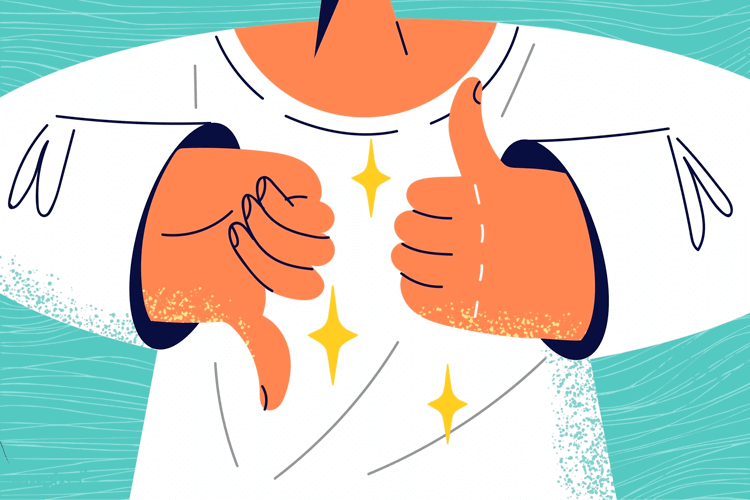26 Customer Service Body Language Do's and Don'ts for the Best Customer Interactions
For customer service, communication extends far beyond mere words. While verbal interactions play a necessary role in addressing customer needs and concerns, it is often the nonverbal cues that leave a lasting impression.
In this article, we review the importance of customer service body language and give a list of practical do's and don'ts to practice. And finally, we offer some tips on how to improve these nonverbal cues.

What is Customer Service Body Language
Customer service body language encompasses the many nonverbal signals and cues conveyed by service representatives during interactions with customers. From facial expressions to posture, gestures to eye contact, every subtle movement and expression can shape the customer's perception of the service encounter.
Why It is Important to Pay Attention to Body Language in Customer Service
Customers subconsciously interpret nonverbal cues, such as facial expressions, gestures, and posture, to gauge the sincerity, empathy, and professionalism of service representatives. Positive body language can convey confidence, trustworthiness, and genuine interest. This can bring a sense of connection and rapport with the customer.
Conversely, negative body language, such as avoiding eye contact, crossing arms, or displaying disinterest, can lead to misinterpretation, distrust, and dissatisfaction.
According to UCLA professor emeritus Albert Mehrabian, nonverbal cues, including body language, account for up to 55% of communication effectiveness. This is followed with 38% attributed to tone of voice and only 7% to the actual words spoken. His conclusions are affectionately known as the 7-38-55 Rule.
26 Customer Service Body Language Do's and Don'ts
Let's look at several ways to convey the right message to customers with body language, and some to avoid:
Do's |
||
Maintain Eye Contact |
Establish trust and show attentiveness by maintaining appropriate eye contact with the customer. |
|
Smile Genuinely |
Smile warmly to create a welcoming atmosphere and demonstrate positivity. |
|
Use Open Posture |
Keep your body language open by facing the customer directly and avoiding crossed arms. |
|
Mirror the Customer |
Subtly mirror the customer's body language to build rapport and create a connection. |
|
Lean Slightly Forward |
Show interest and engagement by leaning slightly forward during conversations. |
|
Nod in Agreement |
Show active listening and understanding by nodding appropriately during the conversation. |
|
Gesture with Open Hands |
Use hand gestures to emphasize points, but keep your palms open to appear non-threatening. |
|
Maintain a Neutral Tone |
Speak in a calm and neutral tone to convey professionalism and approachability. |
|
Be Mindful of Personal Space |
Respect the customer's personal space by maintaining an appropriate distance. |
|
Use Facial Expressions |
Display facial expressions that match the tone of the conversation to express empathy and understanding. |
|
Offer a Handshake (if appropriate) |
Initiate a handshake as a friendly greeting if cultural norms permit and the situation is suitable. |
|
Lean Back in Comfort |
When appropriate, lean back slightly to signal relaxation and confidence. |
|
Stay Relaxed |
Keep your body language relaxed and natural to appear approachable and trustworthy. |
|
Thank the Customer |
Express gratitude with your body language when the interaction concludes, such as with a nod or a smile. |
|
Don'ts |
||
Avoid Excessive Fidgeting |
Minimize fidgeting or nervous movements that may convey insecurity or discomfort. |
|
Don't Cross Your Arms |
Crossing your arms can signal defensiveness or closed-mindedness, so keep your arms open. |
|
Avoid Looking Distracted |
Stay focused on the customer and avoid distractions like checking your phone or looking around the room. |
|
Don't Slouch |
Maintain good posture to convey confidence and professionalism; slouching can give the impression of laziness or disinterest. |
|
Avoid Rapid Movements |
Sudden or jerky movements can be unsettling, so strive for smooth and controlled gestures. |
|
Don't Roll Your Eyes |
Avoid displaying negative expressions like eye-rolling, which can be interpreted as disrespectful or dismissive. |
|
Avoid Crossing Legs |
Crossing legs can create a barrier between you and the customer, so keep your legs uncrossed and feet planted firmly on the ground. |
|
Avoid Looking Bored |
Maintain an engaged expression and avoid appearing bored or disinterested in the conversation. |
|
Don't Interrupt |
Show respect for the customer's thoughts and opinions by refraining from interrupting them. |
|
Avoid Excessive Hand Gestures |
While hand gestures can enhance communication, excessive or erratic gestures may be distracting or confusing. |
|
Don't Point Fingers |
Pointing fingers can come across as accusatory or aggressive, so use open-handed gestures instead. |
|
Avoid Overly Stiff Posture |
While good posture is important, being overly stiff can make you appear rigid or unapproachable. |
|
Tips for Improving Customer Service Body Language
-
Practice Active Listening
Active listening requires hearing the customer and also understanding their needs and concerns. Practice focused eye contact, nodding in agreement, and providing other nonverbal cues that indicate understanding and empathy.
-
Solicit Feedback
Seeking feedback from colleagues, supervisors, or even customers themselves can provide valuable insights into one's body language and communication style.
-
Perform Self-Assessment
Engaging in self-assessment by recording interactions or observing oneself in a mirror can help identify areas for improvement and refine nonverbal communication skills.
-
Use Role-playing Exercises
By assuming various roles and scenarios, individuals can experiment with different nonverbal cues, gestures, and facial expressions to enhance their communication effectiveness and adaptability.
-
Leverage Training Resources
Take advantage of training programs, workshops, or online resources that focus on customer service, communication skills, and body language.
The Bottom Line: Actions Can Speak Louder Than Words, Even in Customer Service
By understanding the significance of body language in customer interactions and incorporating the tips provided above for improvement, service professionals can elevate their communication effectiveness. From practicing active listening to self and colleague feedback, good nonverbal communication can build trust and loyalty with customers.
The ability to communicate effectively through both verbal and nonverbal means remains a critical skill for customer service professionals. By continuously refining their communication skills, service providers can create meaningful connections, exceed customer expectations, and contribute to the long-term success of their organizations.
Giva Can Help You Provide the Best Customer Experience
Customer service and ticket management systems go hand-in-hand. They significantly lower operational costs, increase agents' productivity, and improve customer/client satisfaction.
Giva's reports and dashboards are not only visually appealing, but they're easy to understand. We have the best real-time custom reporting and KPIs: Full color charts and graphs. You can create, save, share and schedule delivery of standard and custom reports.
Also, our Customer Self-Service Portal lets you provide customers round-the-clock access to customer service resources, so they can resolve their own issues before contacting your agents.





